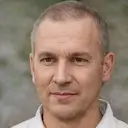Understanding Transcription and Translation: What Sets Them Apart?
In an increasingly global world, clear communication is key. Two important services that make communication easier are transcription and translation. Though they sound similar, they serve different purposes and are used in many industries. This guide will break down what each service means, how they work, and why they matter.
What Is Transcription?
Transcription is the process of turning spoken words from an audio or video file into a written document. The goal is to create a text version that closely matches what was said. This means keeping the same language, slang, and even pauses or laughs.
- Every word, repetition, stutter, or sound such as “um” or “uh” is written down.
- Transcription does not change sentence structure or fix grammar mistakes.
- Transcribers write what is said, not what they think the speaker meant.
There are two main types of transcription:
Verbatim Transcription
- Captures everything exactly as spoken, including pauses, false starts, and nonverbal sounds.
- Common in legal, medical, and research settings where every detail matters.
Edited Transcription
- Cleans up the text, removing stutters, repeated words, and unnecessary sounds.
- Makes the content easier to read but still reflects the speaker’s main points.
Transcription can be done by people or with automated transcription software. Human transcription is accurate but takes more time, while automated tools can be fast but sometimes make mistakes (2023). Many businesses choose to use both to speed up the process and check for errors. For those looking for reliable results, professional transcription services ensure accuracy and consistency.
What Is Translation?
Translation changes words from one language to another. The purpose is to keep the same meaning, feeling, and context as the original. Good translators must know both languages well and understand the topic they’re working with.
- Translation is not just word-for-word replacement.
- It adapts idioms, slang, and cultural references for the new audience.
- Accuracy and clarity are more important than strict replication.
While transcription deals with spoken words, translation usually deals with written content. Sometimes, businesses require audio translation, which combines both skills—first transcribing what was said, then converting it into another language.
Types of Translation
- Literary translation: For books, poems, and stories, translators focus on style and emotion.
- Non-literary translation: Used for manuals, websites, legal or medical documents, and focuses on clarity and correctness.
Many companies now use computer tools to speed up translation, but human skills are still needed for the best results (2022). The best approach combines technology and expert translators, just like with transcription. To reach global audiences, professional translation services help make sure your message is clear in any language.
Why Is Transcription Important?
Transcription helps many industries share information more easily. Here are some reasons why transcription is so useful:
1. Legal Use
- Lawyers and courts need accurate transcripts to review cases.
- Transcripts serve as official records in hearings or trials.
2. Healthcare
- Doctors and medical staff use transcripts to document patient interviews, which helps improve care (American Health Information Management Association, 2021).
- Medical transcription allows quick review and saves time on paperwork.
3. Education
- Transcripts help students and teachers by turning lectures into text.
- Studies show that transcribing audio improves learning by up to 50% (University of Wisconsin, 2022).
4. Marketing and Media
- Transcripts make videos, podcasts, and webinars searchable by Google, increasing visibility.
- Video with text captures more viewers—online video makes up almost 70% of all consumer content (Statista, 2023).
5. Accessibility
- Over 33 million Americans have hearing loss (WHO, 2022).
- Transcription and closed captions make media accessible to everyone.
Why Is Translation Important?
Translation breaks down language barriers. It helps businesses, schools, and communities connect with people worldwide.
- Only about 10% of people in the world speak English.
- 75% of customers are more likely to buy when information is in their own language (Common Sense Advisory, 2020).
1. Global Reach
- Businesses use translation to grow in new markets and sell more products.
- Online stores, apps, and websites often need to provide information in multiple languages.
2. Cultural Connection
- People understand and trust messages more when they are in their native language.
- Translation helps share music, movies, and art with new audiences.
3. Education
- Online learning is growing, and courses translated into many languages reach more students every year (OECD, 2023).
4. New Markets
- As economies grow, languages like Japanese, Chinese, and others become more important for global business.
Transcription vs. Translation: Key Differences
- Transcription: Takes spoken words and turns them into written text, keeping the same language.
- Translation: Takes written text and changes it into another language, keeping the same meaning.
- Transcription works with audio and video files, while translation works with text.
- For a video in French you want English subtitles for, you need transcription first, then translation.
Combining Transcription and Translation
Sometimes, you may need both services. For example, if you have an interview in Spanish and want to share it with English speakers, you will first create a Spanish transcript. Next, you translate it into English. Accurate transcription leads to better translation, which avoids misunderstandings.
Conclusion: Choosing the Right Solution
Transcription and translation serve different needs, but both are important for clear communication. Whether you want to make your content searchable, accessible, or ready for global audiences, knowing the difference is key.
GoTranscript can help with every step—from transcription services and closed captioning to text translation and AI-powered solutions. If you need help deciding which service best fits your project or want expert results, order transcription or order captions online today. For more information on pricing, check out the transcription pricing page or the captioning rates overview.



















 Verified Order
Verified Order